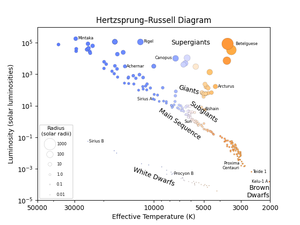Glossary term: Brown Dwarf
Description: A brown dwarf is an object too low in mass to be a star but too high in mass to be a planet. Stars are fueled by hydrogen fusion in their cores. Brown dwarfs have internal temperatures that are too low to sustain hydrogen fusion. However, early in their lifetime brown dwarfs are able to briefly fuse deuterium, a heavier form of hydrogen. This deuterium fusion is used to distinguish brown dwarfs from planets but is hard to observe. Brown dwarfs typically have masses between 1.2% and 8% of the mass of the Sun (around 12–80 times the mass of Jupiter) and are roughly the same physical size as Jupiter. Young brown dwarfs have similar temperatures in their outer regions (effective temperature) to low mass stars (red dwarfs) but lacking internal heat sources they cool as they age, with some cooling to a few hundred degrees Celsius.
Related Terms:
See this term in other languages
Term and definition status: This term and its definition have been approved by a research astronomer and a teacher
The OAE Multilingual Glossary is a project of the IAU Office of Astronomy for Education (OAE) in collaboration with the IAU Office of Astronomy Outreach (OAO). The terms and definitions were chosen, written and reviewed by a collective effort from the OAE, the OAE Centers and Nodes, the OAE National Astronomy Education Coordinators (NAECs) and other volunteers. You can find a full list of credits here. All glossary terms and their definitions are released under a Creative Commons CC BY-4.0 license and should be credited to "IAU OAE".
If you notice a factual error in this glossary definition then please get in touch.
Related Diagrams
Hertzsprung-Russell diagram
Credit: IAU OAE/Niall Deacon
License: CC-BY-4.0 Creative Commons Attribution 4.0 International (CC BY 4.0) icons









